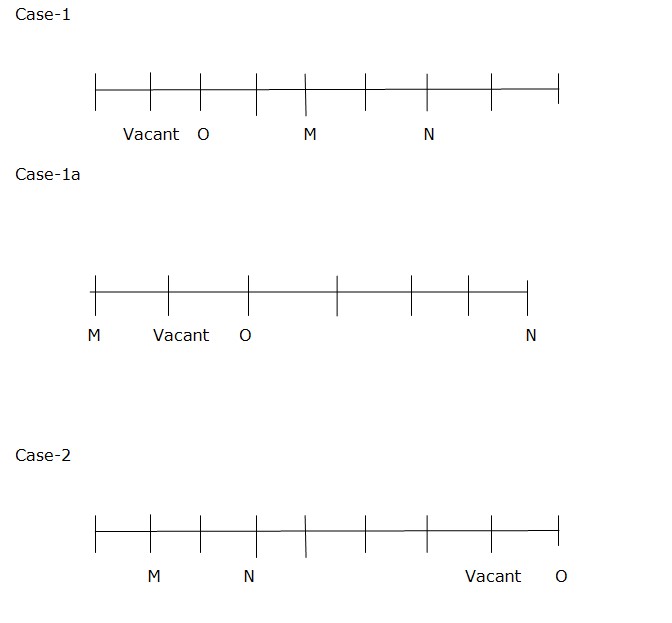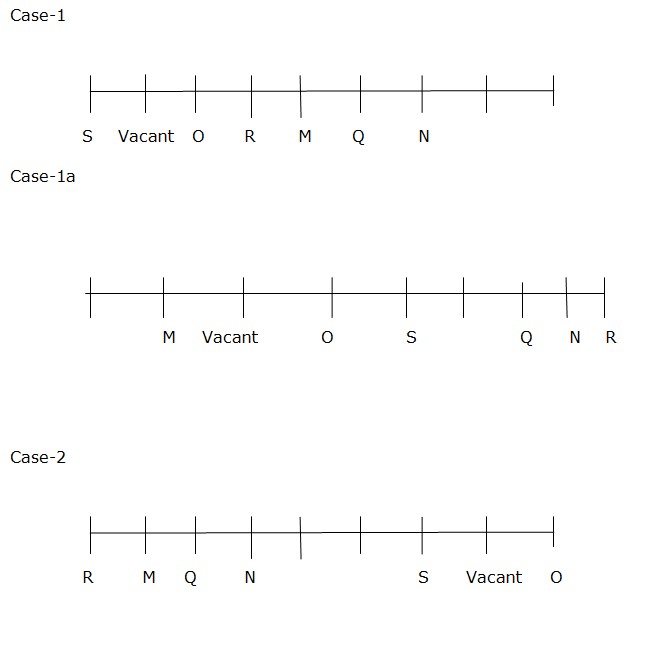Question
What is the position of Q from the left end?
Study the following information carefully and answer the questions given below. Eight friends – M, N, O, P, Q, R, S, and T, are seating on nine seats in a straight line at an equal distance but not necessarily in the same order. One seat in the row is vacant. All of them are facing north directions. There are three persons sit between O and N. The person who sits two places away from N sits fourth to the right of M. M sits neither adjacent to O nor adjacent to S. The person who sits immediate left of the vacant seat sits two places away from O. Q does not sit adjacent to O. R sits two places away from Q. The number of persons who sits between N and R is one less than the number of persons who sits between S and Q. M does not sit at the end. T sits adjacent to N. The number of persons who sits between Q and P is same as the number of persons who sits between T and O. Q does not sit right of N.Solution
There are three persons sit between O and N. The person who sits two places away from N sits fourth to the right of M. M sits neither adjacent to O nor adjacent to S. The person who sits immediate left of the vacant seat sits two places away from O.  Q does not sit adjacent to O. R sits two places away from Q. The number of persons who sits between N and R is one less than the number of persons who sits between S and Q. M does not sit at the end. Q does not sits right of N.
Q does not sit adjacent to O. R sits two places away from Q. The number of persons who sits between N and R is one less than the number of persons who sits between S and Q. M does not sit at the end. Q does not sits right of N.  T sits adjacent to N. This eliminates case 1a. The number of persons who sits between Q and P is same as the number of persons who sits between T and O. This eliminates case 1 and 1a. so final case-2 Case-2
T sits adjacent to N. This eliminates case 1a. The number of persons who sits between Q and P is same as the number of persons who sits between T and O. This eliminates case 1 and 1a. so final case-2 Case-2 
- What will come in place of (?) in the given expression.
(0.2 × 0.5) + (0.3 × 0.4) = ? 24% of 150% of 500 + 140 = ? × 8
If √3n 729, then the value of n is equal to:
(286 ÷ 11 + 14) × 5 = 40 + 25% of ?
17.5% of 400 – 24% of 150 = ?
If A = 0.84181818... then what will be the difference between the numerator and denominator of the lowest fraction form of A?
44% of 1250 + 46 × 34 = 40% of ? + 1154
32 X 25 ÷ 4 + 12 of 30 = ? X 5 - 30
342 – 232 + 256 – 104 = ?
(630 ÷ 35) × 2 + 144 = ? × 2
Relevant for Exams:


